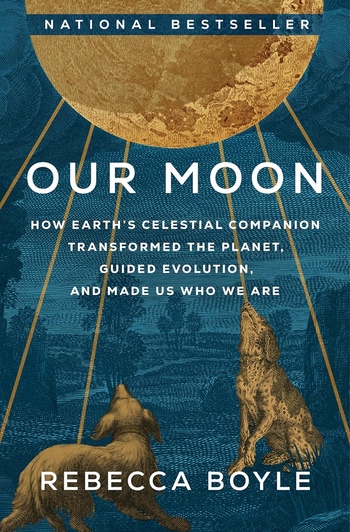Review: Our Moonby Jeff Foust
|
| What Our Moon makes clear is the influence the Moon has on us, shaping not just our society but also our planet: we would not be here without the Moon, in many different ways. |
The Moon is having a big year of its own. Three lunar lander missions have launched so far this year—with varying degrees of success—with perhaps three or four more before the end of the year. NASA, with international partners, is working to get astronauts back the lunar surface later this decade as China shows signs of accelerating its own human lunar ambitions.
However, every year may be a big year for the Moon in the sense of the profound effect our natural satellite has had on Earth. That’s the theme of Our Moon by science writer Rebecca Boyle, a wide-ranging exploration of the Moon and how it shaped our planet, the life that calls it home, and our society.
Boyle takes the reader on a whirlwind, but entertaining and enlightening, tour of various topics related to the Moon. It starts with planetary science, looking at models for the formation of the Moon through the collision of a protoplanet dubbed Theia with the early Earth. The book then goes into topics like biology and archaeology, examining how the Moon affected the formation and development of life on Earth and its influence on early civilizations. That includes meeting the head of a German archaeology museum who described his efforts to recover the Nebra sky disk, a Bronze Age representation of the Moon and night, that involved undercover meetings with black-market dealers.
The book makes its way back to the modern era, describing how the Apollo missions and the science provided by the samples returned from them turned the Moon from “a faceless luminary in our imaginations” into an “awesome three-dimensional sphere.” The book touches a little bit at the end on the future of lunar exploration, including the Artemis program and commercial interest, with some trepidation about the latter particularly when it comes to matters like deciding who can mine the Moon. “The Moon belongs to everyone, which means it belongs to no one,” she writes. (Space lawyers are likely to chime in here about the differences between res communis and res nullis, but that is beyond the scope of this book or this review.)
What Our Moon makes clear is the influence the Moon has on us, shaping not just our society but also our planet: we would not be here without the Moon, in many different ways. The Moon isn’t easily overshadowed, and on next Monday it will be the one doing the shadowing.
Note: we are now moderating comments. There will be a delay in posting comments and no guarantee that all submitted comments will be posted.
